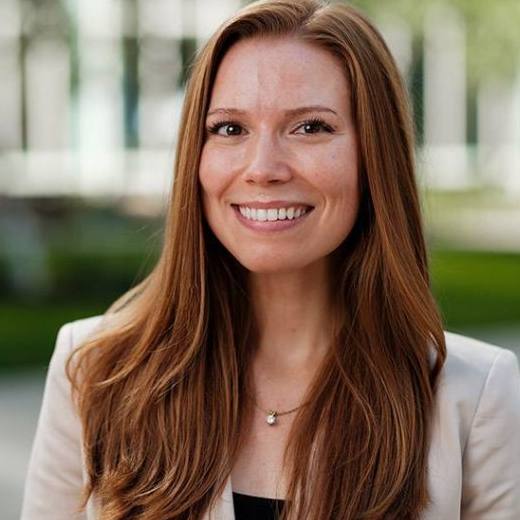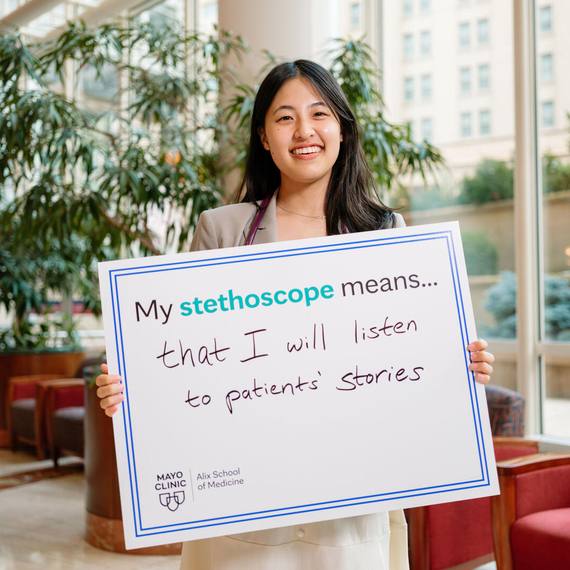-
Paying it Forward: Mentoring Teens on Biomedical Research
Doctoral students give aspiring scientists real-life exposure to lab careers.
At Mayo Clinic, Cailin Austin ran experiments to better understand pancreatic cancer genesis and provide information for the development of new treatments. Then she graduated from high school. Austin, 18, gained a first-hand glimpse into the life of biomedical researcher through Mayo Clinic’s High School Mentorship Program.
In the pay-it-forward tradition that ignites an enduring passion for science and research, Austin is the latest in a long lineage of mentorship. Stretching from Argentina to Rochester, Minnesota, it’s a relationship that benefits the apprentice, the mentor, and ultimately, the human race.
Because of her interest in research, Austin was placed in the lab of Martin E. Fernandez-Zapico, M.D., a specialist in pancreatic cancer.

“It was an awesome opportunity,” Austin says of her 60 hours in the lab. “It confirmed that I like science and gave me a good overview of the research field. Science has always been a big part of my life. How chemistry works in the body is amazing to me.”
She joined the research team in January 2017. Austin knew she wanted to major in but knew nothing about a key area: epigenetics, the study of the mechanisms that regulate gene expression. Guided by her mentor in the lab, Mayo Clinic Graduate School of Biomedical Sciences student Stephanie Safgren, Austin learned how to run experiments on epigenetic switches that can turn on malignancy.
“It was super interesting,” says Austin, who found it enlightening to see how rigorous experiments must be and how in-depth a lab can go on a single topic. Best of all, she wasn’t simply an observer. She conducted her own research project.
For Austin and Safgren, mentoring was a two-way learning experience.
While Austin developed lab techniques and a sense of where education could take her in the future, Safgren—who worked her way up to a senior research technician in a Mayo laboratory before deciding to get her doctorate in molecular pharmacology and experimental therapeutics—grew in her ability to communicate technical information.

“It’s always a challenge to find the right way to explain the science to another person, based on their level of knowledge,” Safgren says. “Mentoring builds on my ability to describe what I’m doing and why it’s important.”
Grad Students Fuel More Mentoring
In 2011, Alex Weston was the first student in the mentoring program from Stewartville (Minn.) High School, about 10 miles south of Mayo Clinic in Rochester, Minnesota. His mentor was Matthew Urban, Ph.D., a Mayo researcher developing ultrasound-based imaging to noninvasively determine the stiffness of human kidneys, which can change as a result of disease.
“The opportunity was hugely important to my career,” Weston says. “It was my first exposure to scientific research. That experience can grow into something really powerful for a high school student. ”
Now a second-year graduate student in Mayo’s Graduate School of Biomedical Sciences, Weston and the local chapter of the Biomedical Engineering Society are helping high school students connect with research mentors. To get more students excited about science, the local chapter has pledged to help find a mentor for every area student interested in biomedical science.
“One of the big challenges of most mentoring programs is that you have to find a mentor on your own,” Weston explains. “We wanted to reach out to those who don’t know someone at Mayo. Now students come to us, and we help find a mentor.”
In the past two school years, a team of eight graduate students has placed 13 high school students with Mayo researchers who match their interests, from cancer to epidemiology to exercise physiology.
“Sometimes they have really specific requests,” Weston says. “For example, one student really wanted to learn more about anesthesiology and tissue engineering, and we were able to place her in a lab that did both.”
Eleven graduate students have served as mentors, mainly to pass on the skills, values and insights they have gleaned from their own mentors. Dr. Fernandez-Zapico supports the mentoring program because mentors helped him decide to become a physician and researcher.
“You can read all the books you want, but there’s nothing like a real-life experience,” he says. “Mentoring is a way for me to pay back all the help I got in my career.”
The Mentoring Tradition Continues
By the end of a semester of two afternoons a week at Mayo, Austin was fluent in lab jargon. She’s now adept at “doing transfections” (introducing genetic material into a cell), “passaging cells” (transplanting samples to a larger container for unhindered growth), and “performing assays” (quantitative and qualitative analyses) of molecules that play a role in triggering pancreatic cancer and other tumors.
Austin is thinking of becoming a pharmacist or physician’s assistant, but the lab experience left her hungry for more research opportunities in the future. Her mentor Safgren, now in the final year of graduate training, was happy to continue the tradition of mentorship, taking Austin under her wing in the same way Safgren was mentored by Dr. Fernandez-Zapico, and as he was mentored by a microbiologist at the University of Cordoba in Argentina who was in turn mentored by a scientist willing to guide an eager student toward a future career in biomedical research. In the best tradition of science, mentoring helps both the mentor and the mentee.
“She was motivated,” Safgren says of Austin. “And I feel like I was making a difference.”
- Jon Holten, November 7, 2017







